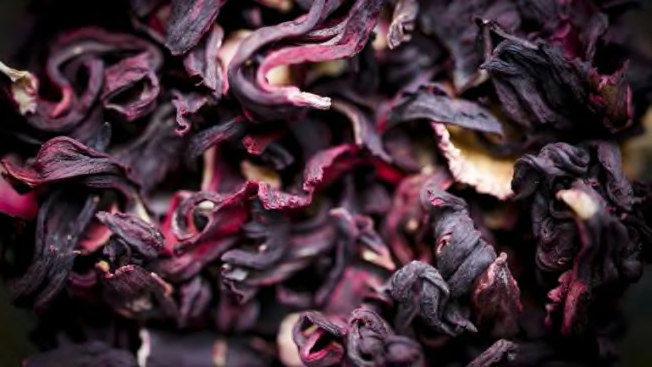Green Tea

Best water temperature: 175° F to 180° F
Optimal steep time: 2 to 3 minutes
What to add: Nothing. Serve straight up.
Green tea makes up just about 15 percent of all the tea imported into the U.S. Like black tea, it’s made by exposing it to open air to wilt it, then drying it, but it more quickly goes from being picked to being dried. It’s commonly steeped alone, but there are green teas available with a variety of natural flavors added as well.
Scented Green Teas
You may increasingly find green tea blended with other natural flavors. Among the green teas in my kitchen cupboard, for example, is green jasmine tea, which has a distinctly green tea taste and a hint of jasmine flowers or jasmine oil. Genmaicha is another green tea, but it contains toasted rice. It may be an acquired taste if you’re used to more basic green teas, but you can cook with it, too, instead of simply drinking it straight.
Matcha
Best water temperature: 175° F to 180° F
Optimal steep time: None, drink after whisking in hot water.
What to add: Nothing. Best served straight up.
I see matcha as the soft shell crab of green teas: You consume the whole leaf. It’s dried, then ground into a powder, and whisked into hot water. Matcha can be found blended with milk in an iced latte from Dunkin’ or Starbucks, or in the form of ice cream, but to truly appreciate the flavor, and the caffeine content that’s nearly double that of regular brewed tea, I think it’s best to drink it with nothing added. Maeda-en Ceremonial Matcha (Amazon) is currently in my pantry to satisfy a green tea craving.
Oolong Tea

Best water temperature: 185° F to 205° F
Optimal steep time: 3 minutes
What to add: Nothing. Best served straight up.
Oolong teas sit between black and green, depending on how the leaves are processed. Darker oolongs are processed more like black tea, and lighter oolongs are processed more similarly to green tea. Tieguanyin is a type of oolong that I first learned of under the name Kuan Yin, or the Iron Goddess of Mercy. In addition to being prepared using these typical guidelines, oolong is used for gong fu cha, says Teng, the tea educator and founder of Tea Drunk. Oolongs tend to be smooth, and some are described as tasting milky on their own.
White Tea

Best water temperature: 165° F to 170° F
Optimal steep time: 2 to 3 minutes
What to add: Nothing
White tea is delicate, so it’s best to treat it delicately. That means use water that’s not too hot, and don’t steep it for too long. While some tea experts and brands suggest steeping for just a couple of minutes, the directions on the tin of white tea I own say to steep for just 1 minute.
Once upon a time, I was gifted a pricey tin of Rishi Silver Needle White Tea, and I never would have guessed what the rare, fuzzy little hand-picked buds harvested early in the spring would taste like: mild, but with a complex combination of a little grassy, slightly fruity, and slightly floral.
Herbal Tea

Best water temperature: 175° F to 212° F
Optimal steep time: 2 to 7 minutes
What to add: Drink as-is or add honey or lemon to taste
Herbal tinctures like mint, chamomile, rooibos, and hibiscus are popular, but there’s a wide variety of herbal blends to choose from, too, and the optimal steep time can vary, so check the package directions.
“The specific steeping time recommended on the packaging is important for ingredients to be allowed the optimal time to develop their flavor and mouthfeel,” says Heather Black, spokesperson for Clipper Tea, a top tea brand in England. Black says that generally if you’re looking for a lighter or more delicate taste, 8 ounces of boiling water (212° F) for 3 to 4 minutes is the way to go, and if you want a stronger and fuller mouthfeel, you can steep longer, from 5 to 7 minutes.
Kajaria, the Trishnna Tea co-founder, recommends brewing his company’s loose leaf herbal teas at 175° F for 2 to 3 minutes.




